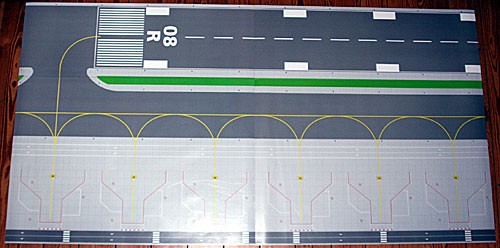

Their primary duty is to get you safely off a burning, smoke-filled aircraft in the event of an accident. 1968 United Airlines “Stewardesses” – Courtesy SDASM Archives on Flickr The correct term is Flight Attendant. And you don’t need to differentiate between “male flight attendant” and “female flight attendant.” Just f light attendant – we’re all aware that both genders have careers as cabin crew members. Even in 2008 we didn’t call them “stewardess” (but apparently Fox News did) If you’re one of the older crowd (or the Fox News tweeter), please don’t refer to your cabin crew as s tewardess, steward, stew, air hostess, babe, trolly dolly or cart tart.

Uh, Stewardess? Could you get me a refill? These are trademarked® brands of jet bridges. Be careful when you use the single-word terms Jetway and JetBridge.

An instant hit with passengers, the jet bridge did away with walking on the dangerous apron and climbing stairs. The first jet bridge was installed at the San Francisco airport back in 1959. Other common names are jet ways, gangways, aerobridges and jetties (UK). You know that nifty, elevated tunnel you walk through to board the airplane? It’s called a jet bridge and it’s located on the apron at the gate. Time For Boarding! Jet bridge in Adelaide. There are still no locations on an airport that are officially defined as Tarmac. Congress used incorrect terminology, so now the FAA is stuck with it, and so are we. Unfortunately, “Tarmac Delay” was coined by someone in Congress who didn’t know better. Yes, “Tarmac Delay” can be found on Department of Transportation and FAA documents. Tarmac has not been used as an airport surface material for decades.īut wait… The FAA uses the term “Tarmac Delay” so it MUST be a thing! By today’s standards, it’s a very crude surface and could never handle a heavy aircraft. It’s essentially crushed rock mixed with cement then sealed with tar. It is an improvement on the surface developed in the 1820’s by John Loudon McAdam. Tarmac (short for tarmacadam) is a road surface material patented in 1901 in the UK. Using correct terminology instead of “tarmac” would better describe where the event happened. If a reporter has enough information to make the distinction, it makes sense to use terminology that precisely describes where the story takes place: Apron, Taxiway, and Runway. One news report’s use of the word may be (and often is) completely different from another. The Problem: There is no official definition for “tarmac” in aviation. News media and a few government sources often use the term “ tarmac.” I have seen it used to describe runways, taxiways, aprons, parking lots, and sidewalks and it’s actually incorrect. Aviation professionals cringe when we hear the word. Apron is the internationally accepted term for this area of the airport. The term ramp is outdated but still commonly used in North America and a few other places. The Apron is the place where airplanes park to board passengers and refuel. Taxiways are the “roads” airplanes take to get to and from the runways. We certainly don’t load or unload passengers on runways (unless there is something very wrong with the aircraft). Regardless of what you hear on the news, we don’t sit for hours on runways when we’re delayed. Runways are used by airplanes to takeoff and land. Parts Of An AirportĪirplanes move about on three ( and only three) surfaces on the airport. No worries! AeroSavvy is here to help with a crash course in aviation terminology. Even aviation “analysts” and “experts” get mixed up from time to time. News services often mess up aviation terminology.


 0 kommentar(er)
0 kommentar(er)
